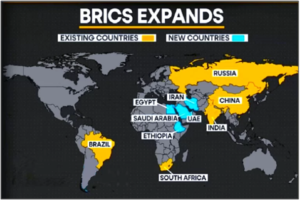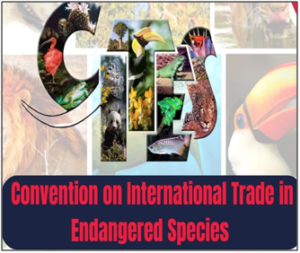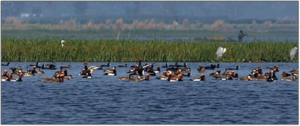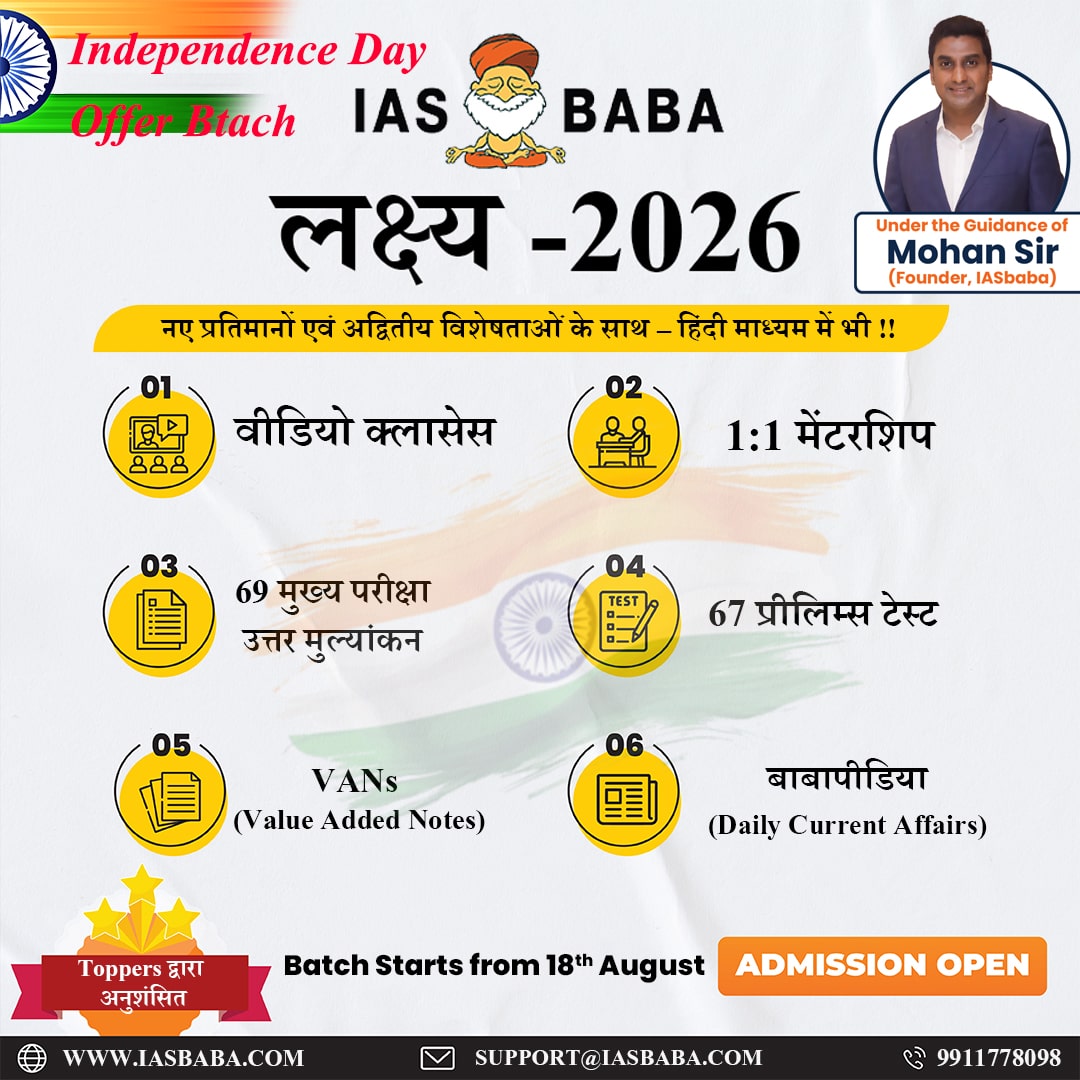IASbaba's Daily Current Affairs Analysis
Archives
(PRELIMS Focus)
Category: International Relations
Context:
- For over a decade, the BRICS have taken a series of steps showing their increasing determination to reduce dependence on the dollar-dominated international financial system.

About BRICS:
- Nomenclature: The acronym ‘BRIC’ was coined by British economist Jim O’Neill in 2001 to represent the emerging economies of Brazil, Russia, India, and China.
- Evolution: BRIC began functioning as a formal group during the G-8 Outreach Summit in 2006, held its first summit in Russia in 2009, and became BRICS with the inclusion of South Africa in 2010.
- Members: The initial five BRICS members were Brazil, Russia, India, China, and South Africa. In 2024, Iran, the United Arab Emirates (UAE), Egypt, and Ethiopia joined the group while Indonesia joined in 2025. Saudi Arabia has not yet formalised its BRICS membership, while Argentina, initially expected to join in 2024, later opted out.
- Significance: BRICS accounts for 45% of the world’s population and 37.3% of global GDP, surpassing the EU’s 14.5% and the G7’s 29.3%.
- Important for energy security: With Iran, Saudi Arabia, and the UAE joining, BRICS now accounts for around 44% of global crude oil production positioning it as a key player in ensuring energy security and influencing oil prices and supply chains.
- Key Initiatives of BRICS: These include New Development Bank (2014), Contingent Reserve Arrangement (CRA), BRICS Grain Exchange, BRICS Rapid Information Security Channel, STI Framework Programme (2015) etc.
About New Development Bank:
- Focus on developing countries: NDB is a multilateral development bank established by BRICS with the purpose of mobilising resources for infrastructure and sustainable development projects in emerging markets and developing countries (EMDCs).
- Fortaleza declaration: The Agreement was signed during the BRICS Summit held in Fortaleza in 2014, and the Bank started operations in 2015.
- Headquarters: Its headquarters is in Shanghai, China, with regional offices in South Africa and Brazil.
- Members: Apart from the founding members, Bangladesh and United Arab Emirates, Egypt, and Uruguay are the new members. The membership is open to members of the United Nations.
- Voting power: The voting power of each member shall equal its subscribed shares in the capital. However, the share of the BRICS nations can never be less than 55% of the voting power. Also, none of the countries will have veto power.
Source:
Category: Polity and Governance
Context:
- The Directorate General of Civil Aviation (DGCA) has proposed revised airfare refund norms requiring airlines to issue a full refund or credit note if a passenger cancels a flight due to a medical emergency, among several other changes.

About Directorate General of Civil Aviation (DGCA):
- Nodal ministry: It is the regulatory body in the field of civil aviation primarily dealing with safety issues. It is an attached office of the Ministry of Civil Aviation.
- Objective: It is responsible for regulation of air transport services to/from/within India and for enforcement of civil air regulations, air safety and airworthiness standards. It also coordinates all regulatory functions with the International Civil Aviation Organisation.
- Headquarters: Its headquarters is located in New Delhi.
- Functions: It ensures the safety of passengers and crew members on all flights operating in India. It also conducts regular safety inspections of all airlines and aircraft to meet the required safety standards. In addition to safety, the DGCA also plays a crucial role in the growth and development of the Indian aviation industry.
- Manages air traffic control systems: The DGCA also plays a key role in developing new air traffic control systems and technologies to improve the overall efficiency of Indian airspace.
- Awards certificates to pilots: The DGCA is also responsible for issuing licenses and certificates to pilots, aircraft maintenance engineers, and other aviation personnel.
- Works closely with AAI: The DGCA is also responsible for the regulation of air traffic in India. It works closely with the Airports Authority of India (AAI) to ensure air traffic is managed safely and efficiently.
About Airports Authority of India (AAI):
- Nature: It is a statutory body under the Directorate General of Civil Aviation, Ministry of Civil Aviation, Government of India.
- Establishment: It was constituted by an Act of Parliament and came into being on 1st April, 1995, by merging the erstwhile National Airports Authority and the International Airports Authority of India.
- Function: The merger brought into existence a single Organization entrusted with the responsibility of creating, upgrading, maintaining, and managing civil aviation infrastructure both on the ground and air space in the country.
Source:
Category: Environment and Ecology
Context:
- A committee of CITES has recommended that India’s wildlife authorities pause the issue of permits that allow endangered animals to be imported by zoos, and wildlife rescue and rehabilitation centres.

About CITES:
- Nomenclature: Convention on International Trade in Endangered Species of Wild Fauna and Flora (CITES) is also known as the Washington Convention.
- Establishment: It was signed on 3rd March 1973 during the World Wildlife Conference and came into force on 1st July 1975. It was drafted following a 1963 resolution adopted by the International Union for Conservation of Nature (IUCN) to regulate wildlife trade.
- Members: The Convention now has 185 Parties, including India (a member since 1976) and the European Union.
- Administration: Administered by the UN Environment Programme (UNEP) in Geneva, CITES regulates international trade in over 40,000 species of wild animals and plants, including live specimens and wildlife-derived products.
- Objective: The treaty aims to ensure that such trade is sustainable, legal, and traceable, supporting biodiversity, local livelihoods, and national economies in line with the UN Sustainable Development Goals.
- Working Procedure: CITES regulates international trade through permits for export, import, re-export, and sea introduction. Each member country appoints management and scientific authorities to oversee licensing and conservation advice.
- Appendices System:
- Appendix I: Species threatened with extinction. Trade is highly restricted.
- Appendix II: Species not endangered but need controlled trade to avoid risk.
- Appendix III: Species protected by at least one country that seeks cooperation to regulate trade.
- Amendments: Changes to Appendices I and II are decided at the Conference of the Parties (CoP), while Appendix III can be amended unilaterally by individual Parties.
- Importance: Wildlife trade is a multi-billion dollar global industry, and unregulated trade alongside habitat loss threatens many species with extinction. CITES is recognized as one of the most effective environmental agreements, supported by tools like the CITES Trade Database (a global reference on legal wildlife trade) and clear guidelines for enforcement and legal acquisition.
- Major initiatives: Initiatives like the Monitoring the Illegal Killing of Elephants (MIKE) Programme have significantly reduced poaching in Africa and Asia. It has helped save critically endangered species such as African elephants, pangolins, and crocodiles.
- Association with Wildlife Protection Act: All species listed in the CITES Appendices are now included in Schedule IV of the Wild Life (Protection) Amendment Act, 2022, reflecting India’s strengthened cooperation with CITES.
- Compliments activities of UN: CITES complements the work of other UN entities, such as the Food and Agriculture Organization (FAO) to improve fisheries management, capacity building and technical cooperation with the Economic and Social Commission for Asia and the Pacific (ESCAP), and initiatives focusing on the youth with the UN Development Programme.
Source:
Category: Science and Technology
Context:
- According to new researches, gamma-ray bursts from black hole ‘morsels’ could expose quantum gravity.

About Gamma-Ray Bursts:
- Definition: Gamma-ray bursts are short-lived explosions of gamma rays, the most energetic form of light.
- Duration: Lasting from a few milliseconds to several hours, they shine hundreds of times brighter than a typical supernova and about a million trillion times as bright as the Sun.
- Uniqueness: Observed in distant galaxies, they are the brightest electromagnetic events known to exist in the universe.
- Intensity: It emits more energy in a few seconds than our Sun will emit in its lifetime.
- Phases: It has two distinct emission phases- the short-lived prompt emission (the initial burst phase that emits gamma-rays), followed by a long-lived multi-wavelength afterglow phase.
- Linkage with black holes: The shortest GRBs likely mark the collision of two compact stellar remnants called neutron stars, and the longest bursts are thought to arise when a massive, rapidly spinning star collapses to form a black hole.
- Sources of Gamma Ray: They are produced by the hottest and most energetic objects in the universe, such as neutron stars and pulsars, supernova explosions, and regions around black holes. On Earth, gamma waves are generated by nuclear explosions, lightning, and the less dramatic activity of radioactive decay.
Source:
Category: Environment and Ecology
Context:
- India’s one more wetland, Gogabeel Lake in Katihar district of Bihar, has got a tag of international importance as a Ramsar site, bringing the total number of such protected sites in the country to 94.

About Gogabeel Lake:
- Nature: Gogabeel is now Bihar’s sixth Ramsar site, joining others such as Gokul Jalashay and Udaipur Jheel among others.
- Location: It is an oxbow lake situated between the Ganga and Mahananda rivers in Katihar district, Bihar.
- Uniqueness: It is Bihar’s first community reserve and functions as a floodplain wetland, naturally linking with both rivers during the monsoon.
- Festivals associated: Local cultural traditional festivals like Sirva, Adra, Chhat are observed in this wetland.
- Flora: These natural landscapes mostly consist of tropical dry deciduous forests.
- Fauna: It is home to the Smooth Coated Otter (Lutrogale perspici lata) and Helicopter Catfish (Wa lago attu). It serves as a breeding ground for Vulnerable fish species Walago attu.
- Importance: It serves as a major habitat for migratory birds and a breeding ground for aquatic species. It supports rich biodiversity, including aquatic flora, fish, and wetland-dependent species. It also plays a key role in flood mitigation, groundwater recharge, and climate regulation in the Gangetic plains.
Source:
(MAINS Focus)
(GS Paper 3: Environment – Conservation, Afforestation, and Climate Change Mitigation)
Context (Introduction)
The revised Green India Mission (GIM) aims to restore 25 million hectares of degraded land by 2030, aligning with India’s climate commitment to create an additional carbon sink of 3.39 billion tonnes of CO₂ equivalent.
Main Arguments
- Restoration over Plantation: The new GIM framework shifts focus from mere expansion of tree cover to ecological restoration that enhances biodiversity and resilience, acknowledging that “more trees” does not necessarily mean “more carbon sink.”
- Scientific Challenges: A 2025 IIT study found a 12% decline in photosynthetic efficiency due to rising temperatures and soil aridity, revealing that forests are becoming less effective at absorbing carbon despite area growth.
- Integrated Landscape Approach: The mission prioritises biodiversity-rich regions — Aravalli Hills, Western Ghats, mangroves, and Himalayan catchments — linking restoration with agroforestry, watershed programmes, and CAMPA for synergy.
- Legal and Institutional Strength: The Forest Rights Act (2006), CAMPA funds (~₹95,000 crore), and Joint Forest Management (JFM) provide strong policy foundations for community-inclusive forest governance.
- Localized Innovations: States like Odisha and Chhattisgarh show promise through biodiversity-sensitive plantations and livelihood-linked reforestation. Tamil Nadu’s mangrove expansion and Himachal Pradesh’s biochar carbon credit model demonstrate adaptive strategies.
Criticisms / Drawbacks
- Community Exclusion: Many plantation drives bypass local communities, undermining the Forest Rights Act and weakening social legitimacy.
- Monoculture Pitfalls: Past afforestation efforts relying on eucalyptus or acacia have degraded soil, reduced water retention, and displaced native biodiversity.
- Capacity Deficits: Forest departments often lack training in ecological restoration and species-specific planning despite the presence of training institutes in Coimbatore, Uttarakhand, and Byrnihat.
- Underutilisation of Funds: CAMPA’s massive corpus remains underused — Delhi spent only 23% of allocations (2019–24) — reflecting weak financial governance.
- Fragmented Accountability: Absence of transparent monitoring and reporting systems results in poor survival rates and misaligned targets across States.
Reforms and Way Forward
- Empower Communities: Institutionalise participation of Gram Sabhas and JFM Committees in restoration planning, ensuring livelihood linkages and legal ownership.
- Ecological Design: Replace monocultures with native, site-specific species that restore soil health, water balance, and biodiversity.
- Capacity Building: Strengthen ecological training for forest staff through existing national institutes; promote inter-State learning on best practices.
- Smart Financing: Ensure efficient CAMPA fund utilisation; incentivise States experimenting with carbon credit mechanisms and village-level carbon markets.
- Transparency and Monitoring: Introduce public dashboards tracking plantation survival rates, species diversity, fund flow, and community participation.
- Policy Convergence: Align GIM with national missions on agroforestry, climate resilience, and sustainable rural livelihoods for cross-sectoral synergy.
Conclusion
Forests are India’s ecological and economic capital for Viksit Bharat 2047. Effective restoration — rooted in community ownership, ecological science, and fiscal accountability — can transform the Green India Mission from a government scheme into a people-driven movement, positioning India as a global model for climate-resilient restoration.
Mains Question:
- Critically examine how the revised Green India Mission can reconcile ecological restoration with community participation. (150 words, 10 marks)
Source: The Hindu
(GS Paper 3: Cybersecurity, Money Laundering, and Organised Crime)
Context (Introduction)
The Supreme Court’s call for a comprehensive inquiry into transnational digital scams has spotlighted the industrial-scale fraud networks across Southeast Asia, where Indian citizens are both victims and perpetrators under coercion in modern-day scam factories.
Main Arguments
- Industrialised Cybercrime Networks: Digital scams have evolved from individual cyber frauds into organised, cross-border “scam compounds,” particularly in Myanmar, Cambodia, and Laos, run by syndicates operating with regime complicity.
- Human Trafficking and Forced Labour: Thousands of Indians and other nationals are trafficked via fraudulent job offers and visa-free routes into these compounds, where they face violence, sexual abuse, and forced digital labour.
- Conflict-Driven Crime Economies: Myanmar’s post-coup instability and weak governance have enabled militias and Border Guard Forces to fund themselves through scam centre taxation, merging criminal enterprise with insurgent financing.
- Financial Laundering through Cryptocurrencies: Proceeds from “pig butchering” (romance-cum-crypto scams) are laundered via money mules, dubious digital wallets (e.g., Huione Pay), and cryptocurrencies, evading traditional regulatory oversight.
- India’s Dual Vulnerability: India faces a twin challenge—citizens being trafficked abroad into cyber-slavery and millions domestically being defrauded by these same scams, exposing gaps in cyber awareness, law enforcement, and financial tracking.
Criticisms / Drawbacks
- Weak International Mechanisms: Current bilateral frameworks are inadequate against loosely networked syndicates operating in politically unstable or complicit states.
- Limited Domestic Preparedness: India’s cybercrime investigation capabilities and inter-agency coordination remain underdeveloped, with poor public literacy about sophisticated digital fraud.
- Diplomatic Constraints: India’s limited leverage with Myanmar’s junta and Cambodia’s authoritarian regime hampers direct intervention or rescue operations.
- Regulatory Lag: Cryptocurrency and fintech regulations remain reactive, allowing financial anonymity to thrive.
- Fragmented Global Action: Absence of a unified global legal framework treating digital forced labour as modern slavery weakens accountability.
Reforms and Policy Measures
- Public Awareness and Digital Literacy: RBI, CERT-In, and State Police should run nationwide campaigns warning against fraudulent job offers and “digital arrest” scams.
- Cybercrime Infrastructure Strengthening: Establish specialised cybercrime task forces and forensic capabilities under MHA and State cyber units.
- Regional Cooperation Framework: India should coordinate with ASEAN members, China, and Interpol for intelligence sharing, extradition mechanisms, and joint crackdowns.
- Diplomatic and Humanitarian Channels: Engage through UNODC, IOM, and UNHRC to classify scam compounds as sites of forced labour and human trafficking.
- Crypto-Transaction Monitoring: Implement global standards like FATF’s Travel Rule and stricter KYC/AML norms on exchanges to trace cross-border financial flows.
Conclusion
The proliferation of Southeast Asian scam factories represents a hybrid threat—combining cybercrime, human trafficking, and geopolitical instability. India must adopt a whole-of-government and regional diplomatic approach that treats these networks not merely as digital crimes but as crimes against humanity, warranting global cooperation under a cyber-human rights framework.
Mains Question:
- The rise of transnational digital scam exposes new dimensions of cybercrime and human trafficking. Discuss India’s vulnerabilities and the measures needed for a coordinated regional response.(250 words, 15 marks)
Source: The Hindu













